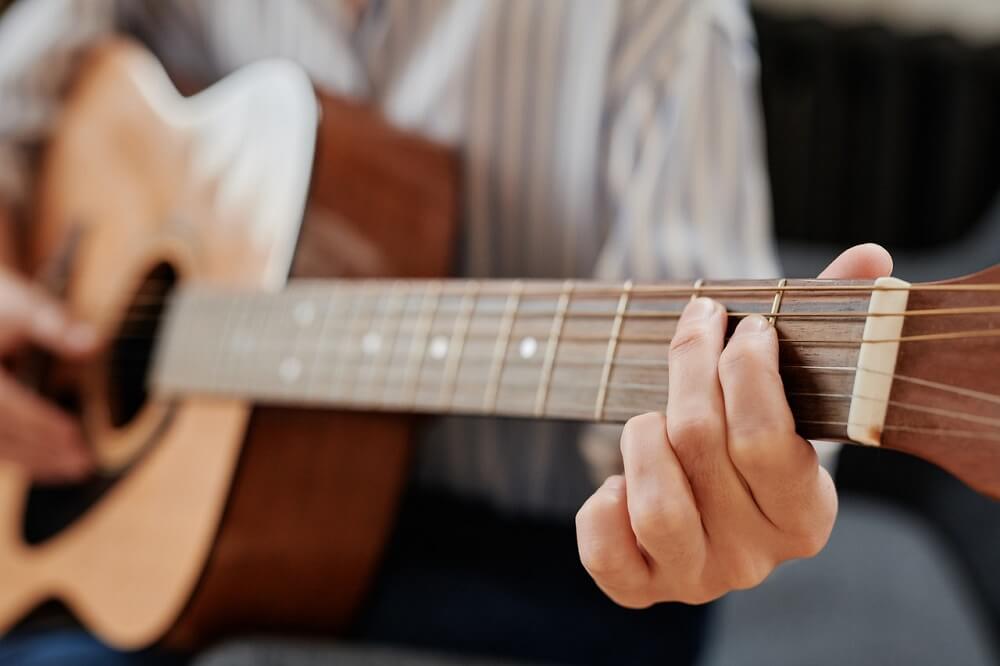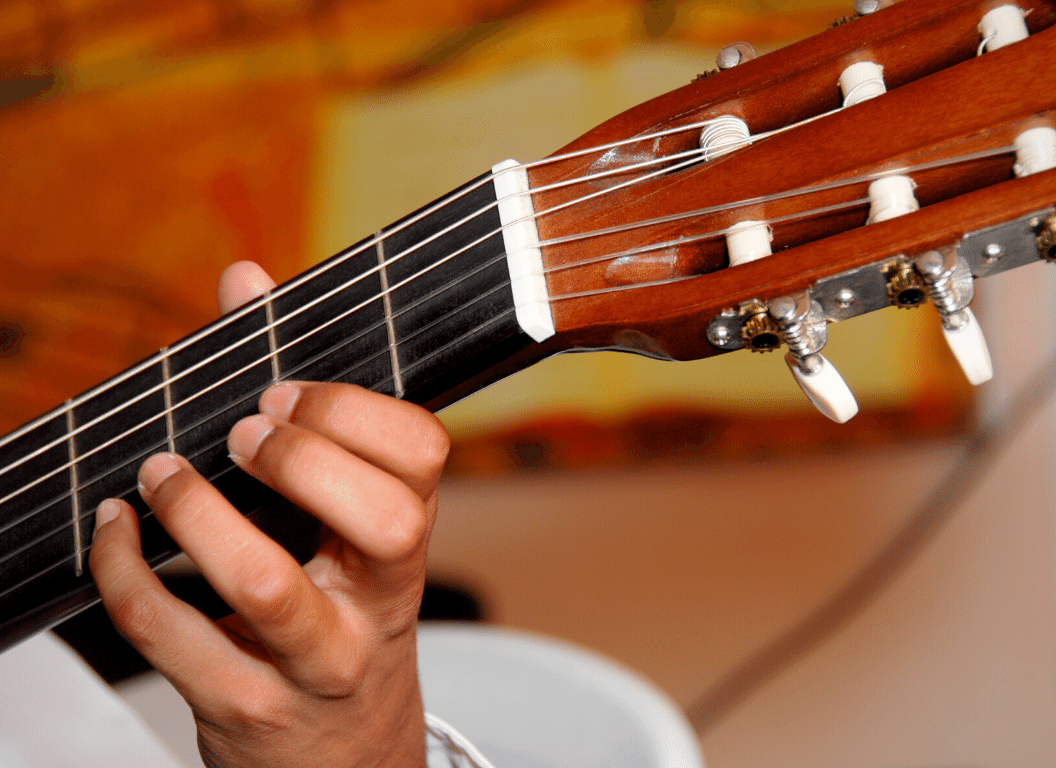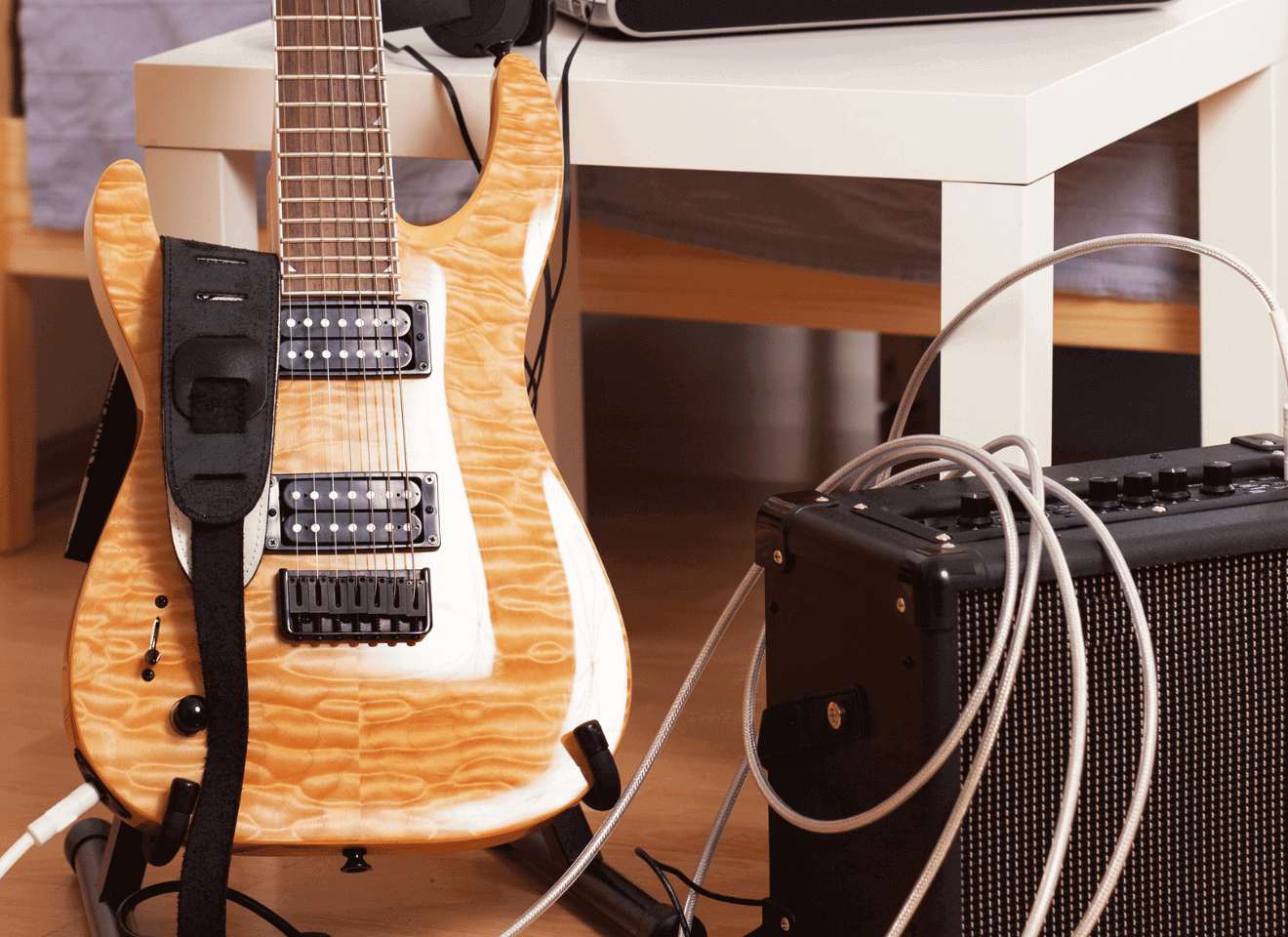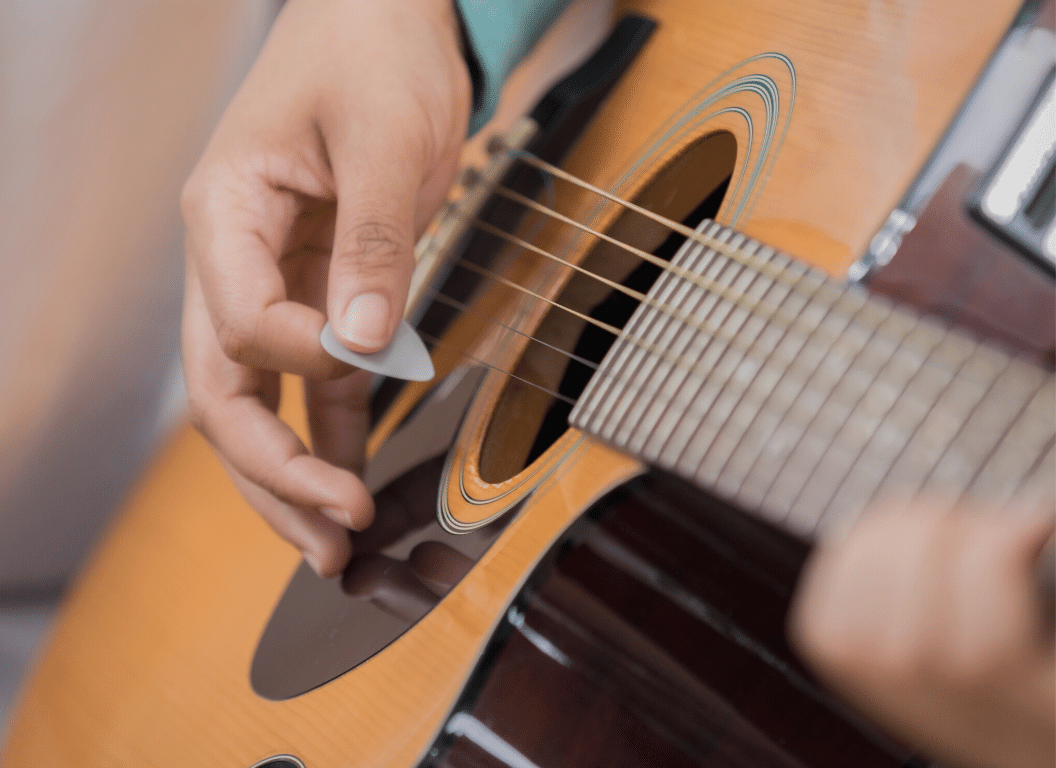How hard you press down on the strings of your guitar can affect the pitch of the notes you play.
Learning how to control the amount of pressure you use will help you play more accurately and with less effort, but more importantly, will create good habits in your playing.
Beginners tend to press way too hard on guitar strings, and this usually causes pain in their fingers and makes it difficult to play cleanly.
If you find yourself pushing too hard, then you’re probably not using your fingers correctly.
In this post, we’ll take a look at some tips for finding the right amount of pressure for each string and for different types of music.
Table of Contents
- How hard should you press down on guitar strings?
- How does string pressure affect different genres?
- Where exactly do you press guitar strings down?
- Should fingers hurt when pressing down on guitar strings?
- Reasons why you might not be pressing the strings correctly
- What’s the difference between acoustic and electric guitar strings?
- Should a beginner learn with an acoustic or electric guitar?
How hard should you press down on guitar strings?
The quick answer is that you should press down just hard enough to make the note sound clean and clear. If you press too hard, the note will sound muffled or buzzy. If you don’t press hard enough, the note will sound thin and weak. A great tip is to get closer to the fret and press down just enough that the string and said fret make contact.
So, how do you find the right amount of pressure?
Well, it depends on a few factors…
- The size of the guitar strings: The thicker the string, the more pressure you’ll need to apply.
- The type of music you’re playing: For example, strumming chords will require less pressure than playing lead guitar.
- How long you’ve been playing guitar: The longer you play, the easier it will be to find the right amount of pressure.
In general, it’s best to start with less pressure and increase it gradually as you get used to the feel of the strings.
If you’re having trouble getting a clean sound, try pressing down a little harder, alternatively, if your fingers are starting to hurt, then you’re probably pressing too hard.
Also, make sure that your hand and wrist are in the correct position and are both as relaxed as possible.
This is generally what causes bad habits in guitar players, so it’s important to be aware of it from the start.
Now let’s take a look at how pressure affects the sound of different types of music.
How does string pressure affect different genres?
As we mentioned before, the type of music you’re playing will affect how hard you need to press down on the strings.
For example, strumming chords doesn’t require as much pressure as playing lead guitar or finger-picking.
This is because when you’re strumming, you’re usually using a pick, and muted strings won’t matter as much since they’ll be drowned out by the other strings.
When you’re playing lead guitar or finger-picking, however, each note is more distinct, so you’ll need to be careful not to apply too much pressure or the sound will be muffled.
As for genres in specific, classical guitarists, for instance, generally use less pressure than rock guitarists.
This is because classical music tends to be more delicate, and too much pressure will make the sound harsh.
In contrast, rock music is usually louder and has more distortion, so you can get away with using more pressure without losing the clarity of the notes.
Jazz guitarists also use less pressure than rock guitarists since they want a smooth, mellow sound.
Of course, these are just generalizations, and ultimately it’s up to you to experiment and find the right amount of pressure for the type of music you’re playing
Where exactly do you press guitar strings down?
Now that we’ve answered the question of how hard to press on guitar strings, you might be wondering where exactly you should be pressing them down.
The best way to find out is by experimenting with different positions until you find one that works for you; a good rule of thumb is to press down behind the fret, not on top of it.
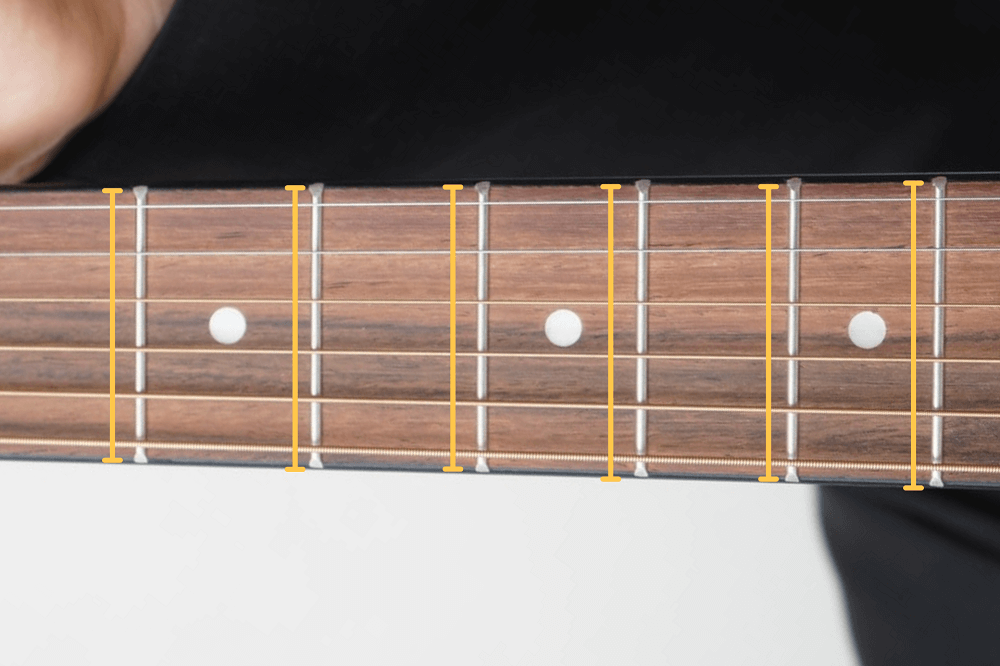
This will help ensure that the string makes contact with the fret and produces a clear note that is not sharp or flat.
I recommend every beginner to get as close to the fret metal as possible since this will help you avoid any “dead” notes (notes that don’t produce a sound).
On the other hand, this prevents unnecessary and extra pressure that you would otherwise apply if you press the strings in the middle of the fret.
This is because once the string and the fret make contact, any additional pressure will not make the note any louder or clearer, it just makes out of tune.
Should fingers hurt when pressing down on guitar strings?
Another common question beginners have is whether or not their fingers should hurt when they press down on the strings.
The answer is no; if your fingers are hurting, it means you’re pressing too hard and you need to back off a bit.
Of course, it’s normal for your fingers to feel a little sore after playing guitar for a while, but if the pain is sharp or persistent, it’s a good idea to take a break and try again later.
Also, a big question you should ask yourself is where the pain is coming from.
If the pain is coming from the tips of your fingers, then it’s probably because you’re pressing too hard and maybe just haven’t been calloused up yet.
A callous is a layer of skin that forms on the fingers from repeated friction, and it can take a few weeks or even months to develop.
For guitarists, this is a good thing since it means you can play for longer without your fingers hurting or bothering you in any way.
Here’s a YouTube video by Guitar Tricks in which they show how to toughen up your fingers for better guitar playing:
Now, if the pain is coming from the joint of your finger (where it bends), however, then it’s a sign that you might be holding the guitar strings too tightly.
Remember, you should only be using the tips of your fingers to press down on the strings, not the whole finger.
Lastly, you might also experience some pain in your wrist, and if that’s the case, then it’s probably because you’re not using the proper technique.
The correct way to hold the guitar is with your wrist parallel to the ground, not bent.
If you find yourself having to bend your wrist to reach the strings, then you need to adjust your position.
If you have any pain in your arms or shoulders, stop playing immediately and consult a doctor; this could be a sign of nerve damage and it’s not something to be taken lightly.
Reasons why you might not be pressing the strings correctly
There are a lot of reasons why you might not be getting the most out of your guitar playing.
In this section, we’re going to take a look at some of the most common mistakes people make and how to fix them.
Reasons why you might not be pressing your guitar strings correctly:
1. You’re not using the right amount of pressure
If you’re not using the right amount of pressure, it’s likely that you’re not getting a clear sound or that your fingers are slipping off the strings.
As we mentioned previously, it’s important to experiment with different pressure levels until you find one that works for you.
A good rule of thumb is to press until you see that both the string and the fret metal are making contact.
You should also make sure that you’re not using too much pressure, as this can make the strings sound muted or even worse out of tune.
2. The guitar action on your guitar might be too high
For those of you that don’t know, the action is the distance between the strings and the fretboard.
This is a common problem for beginners, and it can be easily fixed, if the action on your guitar is too high, you’ll have a hard time pressing down on the strings, which will make it difficult to get a clear sound.
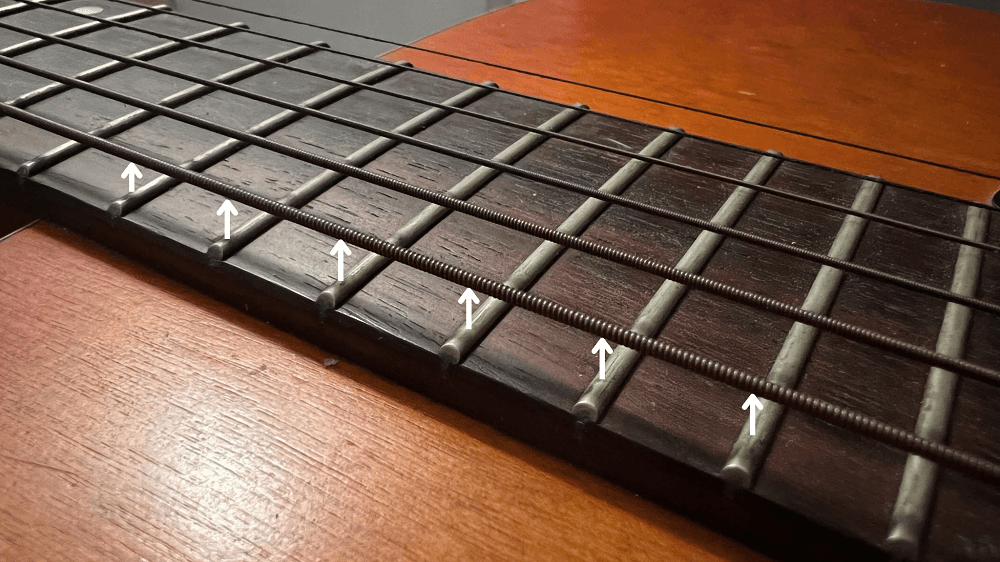
For beginners this often the case, since we all tend to buy low-cost guitars when we first start, which unfortunately often have bad factory settings due to little to no quality control.
Fortunately, this is an easy problem to fix, and all you need to do is lower the action on your guitar.
If you have never done this, I strongly recommend you take your guitar to a qualified technician and have them lower the action for you.
3. Maybe the strings are too old and rusty
If you’ve been playing for a while, it’s likely that your strings are starting to show signs of wear and tear.
Old and rusty strings can make it difficult to press down on the fretboard, which in turn can make it hard to get a clear sound.
If this is the case, then it’s probably time to change your strings as new strings will make a world of difference to your sound and are much easier to press down.
On the other hand, if you’re a beginner, it’s very likely that you haven’t used your strings that much and so the problem lies elsewhere.
4. You might be using the wrong gauge in your strings
When it comes to the term “gauge” this is simply a fancy way of referring to the thickness of the string.
The gauge of strings you use will have a big impact on how easy they are to press down, if you’re using strings that are too thick, it’s likely that you’re finding it difficult to press them down, as they require more pressure.
On the other hand, if you’re using strings that are too thin, it’s likely that they’re slipping off the fretboard or that they’re going out of tune quickly.
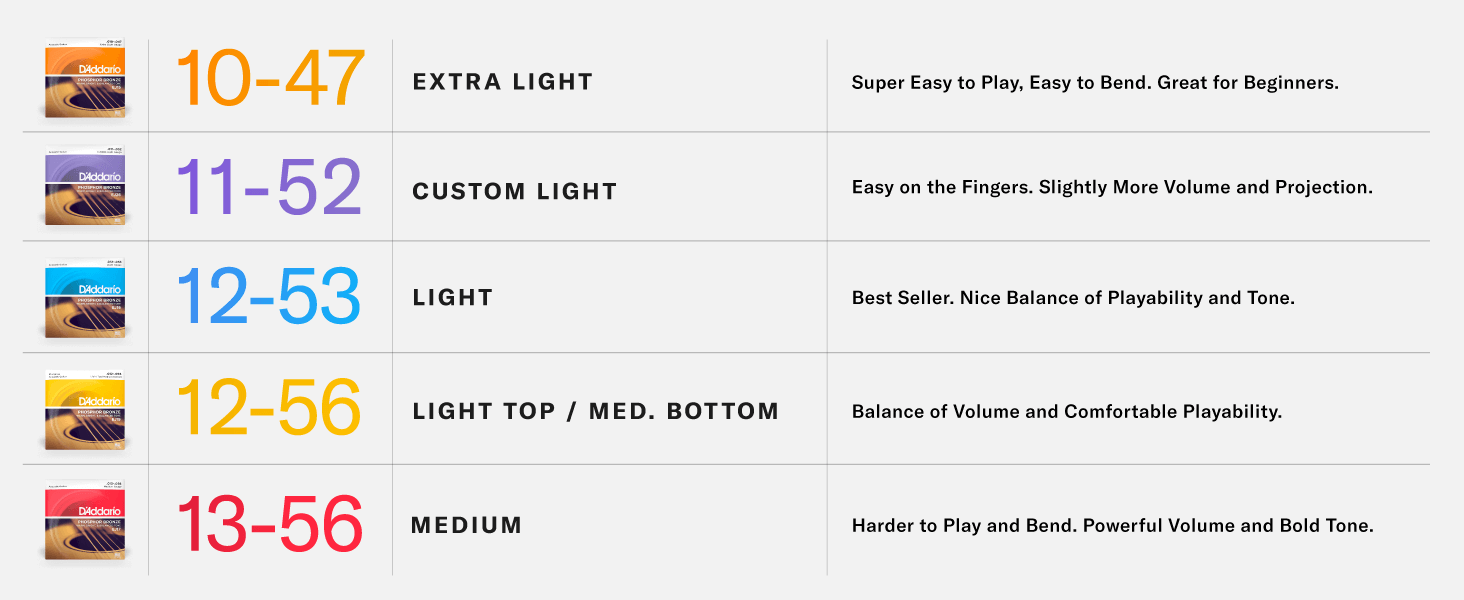
It’s important to find a balance between the two, and it’s often a good idea to experiment with different gauges until you find one that works for you.
If you don’t know what the gauge of your current strings is, you can usually find this information on the packaging and even online.
Once you know, then start lowering them one gauge at a time until you find the perfect balance between thickness and pressure.
5. Your fingernails might be too long
This is usually not a common problem for beginners, but it tends to happen to some people when they’re first starting out.
Long fingernails can make it difficult to press down on the strings correctly, and hence can start to build bad habits in your playing.
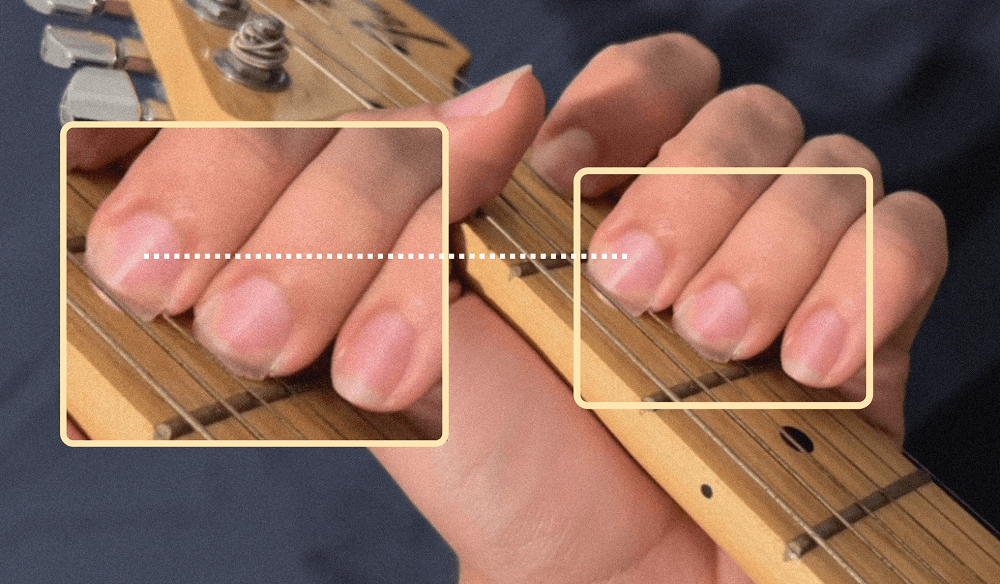
If you find that your nails are getting in the way, then it’s probably a good idea to trim them down until they’re a manageable length.
Also, it might take some time to get used to, but it’s definitely worth it in the long run because with long nails in our fretting hand we’re more likely to make mistakes.
Guitarist with super long nails also have to fret the strings using their fingerprints which can lead to inaccuracy.
Which brings us to our next point…
6. You’re not using the tips of your fingers
The reality is that if you’re not using the tips of your fingers, then you’re likely not pressing down on the strings correctly, and this can lead to all sorts of problems such as muted or buzzed strings.
It might take some time to get used to, but it’s definitely worth it in the long run.
Using the tips of your fingers also gives you more control over the strings, due to less surface area contact.
For people that play or want to play lead guitar, including of course solos, using the tips of their fingers is essential as it gives them more precision and accuracy.
What’s the difference between acoustic and electric guitar strings?
The main difference between acoustic and electric guitar strings is the gauge, or thickness of the string.
Electric guitars generally use thinner strings because they’re easier to press down and they don’t require as much tension to stay in tune.
On the other hand, acoustic guitars generally use thicker strings because they need to be able to produce a louder sound.
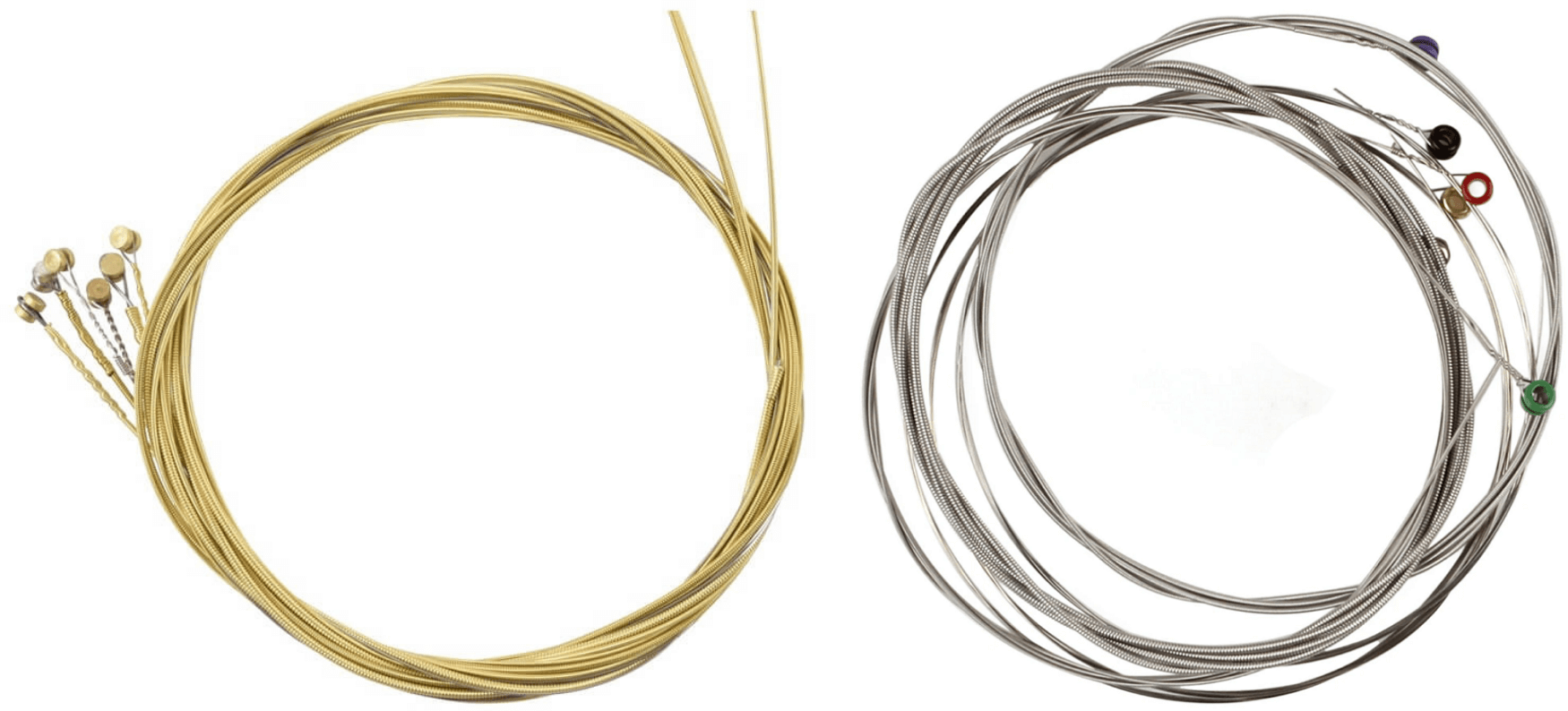
Of course, there are always exceptions to this rule, and there are some acoustic guitars that use thin strings and some electric guitars that use thick strings.
It really depends on the style of music you want to play and the sound you’re going for.
If you’re not sure which type of string is right for you, it’s always a good idea to ask a guitar technician or a guitar teacher as they will be able to help you make the best decision for your individual needs.
Should a beginner learn with an acoustic or electric guitar?
There is no right or wrong answer to this question, as it really depends on the individual.
Some people find it easier to learn on an acoustic guitar because they’re not distracted by the extra features that come with an electric guitar, such as distortion, reverb, etc.
Others find it easier to learn on an electric guitar because they can plug into an amplifier and get a louder sound, which can make it more motivating to practice.
If the amplifier has the option of using headphones, this can be beneficial for beginners as it doesn’t disturb other people in your house.
Strings are replaceable, so they’re not really a factor in deciding which type of guitar to learn on.
If you’re not sure which type of guitar you should learn on, it’s always a good idea to try both and see which one you prefer.
Whichever guitar you choose, make sure that it’s comfortable for you to play and that it’s the right size.
Alternatively, you can buy an acoustic-electric guitar, which is a guitar that can be played both acoustically and plugged into an amplifier.
This way, you get the best of both worlds and you can decide later on down the line whether you want to focus on playing acoustic or electric guitar.

Born and raised in Florida! I’ve been playing guitars for the past 5 years. Love to learn, and I’m always striving to achieve greater heights in music. Currently have a Fender Stratocaster as my main guitar.

